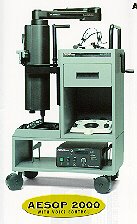Surgical Robotic systems

Robots utilized in medicine, especially in surgeries, serve as assistance to doctors in their role of dispensing medical treatment to patients and even enhance their services. An important aspect is the improvement of the surgeon’s dexterity during surgery. No matter how skilled a surgeon is, there is always a slight tremor of the hands. Morever, operations of highly sensitive and confined body spaces like the brain, heart and prostate, can be performed by only a limited number of surgeons who are skilled and experienced enough for the task. With the advent of such assistive robotic surgical systems as the Automated Endoscopic System for Optimal positioning (AESOP), the Da Vinci surgical system and the ZEUS robotic system, hand tremors are a thing of the past.
The robotic limbs, holding onto the surgical instruments, could execute movements that are as minute as a millionth of an inch. The march towards non-invasive surgery motivates the development of such systems. Increasing number of heart by-pass surgeries are now performed through pin-hole incisions, via a robot-assisted endoscopic extensions. The four-arm Da Vinci system offers great precision and eliminates the need for inverted manipulation of the surgical instruments as the on-board processor can translate the surgeon’s hand movements correctly into the desired manipulation of the surgical instruments. There is also three-dimensional imaging capability via a camera attached to one of the arms.
At the Medical Centre of Hershey, Dr Ralph J. Damiano Jr., used a surgical robotic system that has a camera that magnify views of operation procedures by a power of 16.
Voice commands-driven robots are also a possibility in another up-coming system, called “Hermes”. This will the advent of the “intelligent” operating theatre, in which the doctor just focus on making critical surgical decisions and “asks” the robot to execute the moves.

In use at 280 hospitals now is the AESOP system.
Using the Zeus or da Vinci system, largely invasive surgeries such as heart bypasses, can be made less painful and complicated. Traditional techniques of making a 1-foot-long incision on the chest and thereafter prying open the rib cage to reveal the heart is now replaced by cutting just a tiny hole of 1 cm through which endoscopic extensions containing fibre optics and surgical tools are inserted.
References:
How robotics will work, http://electronics.howstuffworks.com/robotic-surgery1.htm
Robotic Surgery, http://ipp.nasa.gov/innovation/Innovation52/robsurg.htm
Laproscopic Surgery, http://www.lapsurgery.com/robotics.htm#ROBOTS%20IN%20LAPAROSCOPIC%20INGUINAL%20HERNIA%20REPAIR